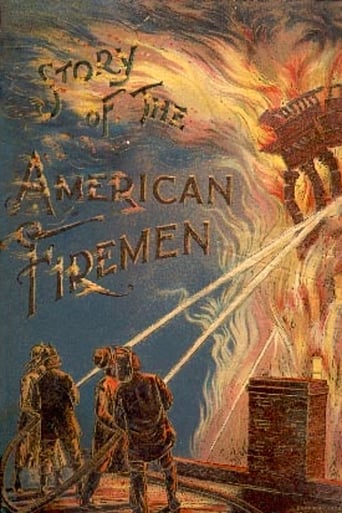cricket crockett
. . . as opposed to the grand documentary suggested by the Edison title. I've seen many bits and pieces from this 6 minute, 45.28 second crazy quilt in other Edison shorts from the previous decade (some from possibly ACTUAL fire runs with REAL firemen!). The long ending sequence at the prop house with smoke machines and histrionic actors was especially familiar to Edison peep show viewers who were repeat dupes--I mean, customers. If you watch this mish-mash closely, it makes little sense. The part I find most ludicrous is the lingering shot of the alarm being sounded by someone pulling the lever inside a fire box. This alarm box is located on a city sidewalk, and the fire turns out to be in the suburbs at a frame house five or ten miles away! Presumably, old Tom's entertainment empire henchmen thought so little of their viewers' intelligence that they would assume a passerby could see a fire, saunter for an hour or two till reaching the big city call box, pull the alarm, wait for three different convoys of fire vehicles to reach the country, arriving just as the lady of the house (who has apparently been stumbling around in the smoke FOR 3 HOURS!) finally collapses onto a conveniently placed bed. I've heard of the suspension of disbelief, but Thomas Edison figured his suspenders reached to the moon!
st-shot
Director Edwin S. Porter ignites things early in Life of an American Fireman with little let up in this 1903 display of narrative filmmaking. Porter literally juxtaposes (early split screen) exposition before sounding the alarm for the smoke eaters to jump into action. After some firehouse mobilization we are treated to a stunning parade of galloping fire engines in what looks to be a twelve alarm fire. Arriving at the fire (actually more smoke) engulfed home the firemen battle their way into the house to save woman and child. Fireman has all the visual and circumstantial elements of suspense and action. It is the Towering Inferno of its day filled with human drama and in the balance moments. Porter's action is both non-stop and engrossing and if he needed any indication that this stuff had a future for making money he need look no further to the crowd quickly multiplying to watch the racing fire chariots in a top rate action film from this early period of film.
kobe1413
Edwin S. Porter and his colleagues, James H. White and George S. Fleming, expand their ambitions. While Life of an American Fireman does not compare with the contemporary works of Ferdinand Zecca or George Melie, it shows the workman-like techniques of the Edison company.The film is a straight-forward tell of a fire company responding to a fire. Much of the film is the driving of the fire engines, focusing on the movement and action of the race to the fire. When the firemen get to the house on fire, a fireman, played by co-filmmaker James H. White, races up the ladder, into the room. He rescues a woman and her daughter, then fights the blaze. Interestingly, the same action is then shown again, but from the perspective from outside of the house. This is a less elegant and dramatic way of presenting the action than later directors would employ. As later films by Griffith and Porter himself would prove, cross-cutting between the two locations builds drama and tension.Overall it represents a step foreword for the Edison filmmakers, yet was still far behind the inventiveness and wizardry of the contemporary European filmmakers.
Spent Bullets
At Edison's Company, he experimented with longer films, and was responsible for directing the first American documentary or realistic narrative film, The Life of an American Fireman (1903). Though it's among the earliest story films (but by no means the first as often alleged), The six-minute narrative film combined re-enacted scenes and documentary footage, and was dramatically edited with inter-cutting between the exterior and interior of a burning house. Edison was actually uncomfortable with Porter's editing techniques, including his use of close-ups to tell an entertaining story. For action, excitement, & suspense, Life of an American Fireman rates awfully high, improving on all that went before, borrowing from what came before wherever it was already thrilling.


